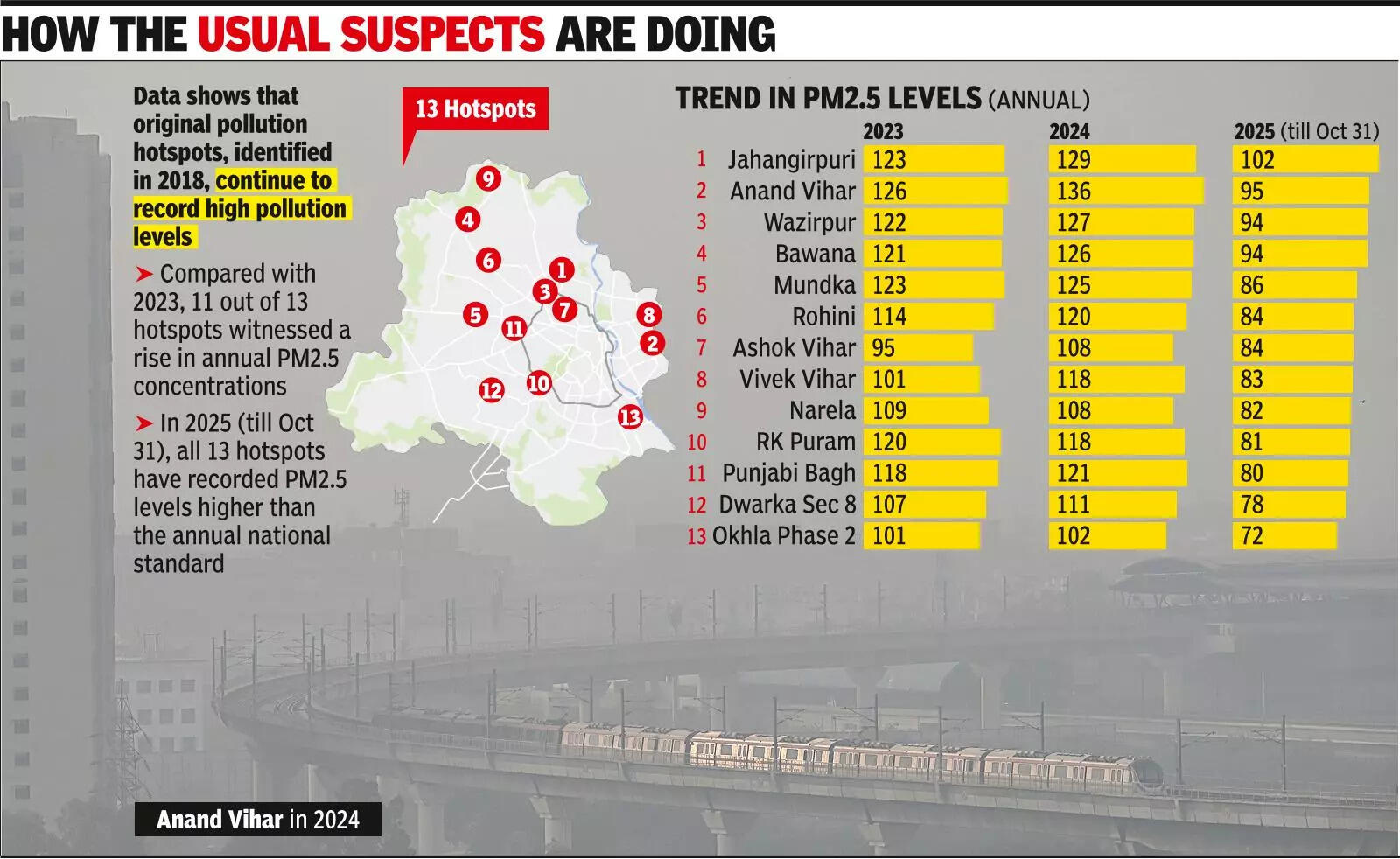ARTICLE AD BOX

NEW DELHI: The capital's overall air quality index (AQI) fluctuates from day to day, but for its 13 pollution hotspots, the story rarely changes — thick smog and dangerously high pollution levels showing little sign of relief. An analysis of annual PM2.5 concentrations at these hotspots shows that 11 of them recorded a rise in average PM2.5 levels last year compared to 2023. All 13 had levels higher than the annual standard till Oct 31 in 2025, according to Centre for Science and Environment (CSE). The annual national ambient air quality standard for PM2.5 is 40 micrograms per cubic metre , while World Health Organisation's annual safe guideline is just 5µg/m³.

.
Anand Vihar, one of the hotspots, recorded an average level of 124 µg/m³ in 2022, rising to 126 in 2023 and further to 136 the next year. It has already hit 95 by Oct 31, this year, which is more than two times the national annual standard. Both Wazirpur and Bawana have recorded PM2.5 levels of 94µg/m³ in 2025. With an average level of 102µg/m³ this year, Jahangirpuri is currently the most polluted area in the city. The figure dipped from 127 in 2022 to 123 in 2023 before going up to 129 the next year.
In comparison to 2023, two hotspots, RK Puram and Dwarka Sector 8, recorded lower levels of PM2.5 in 2024. The remaining 11 hotspots witnessed a rise in annual concentration in 2024 as opposed to a year before. Of all the hotspots, Okhla Phase-2 has had the lowest PM2.5 level in 2025 so far — 72µg/m³. However, it is still 1.8 times higher than the annual national standard. Since Nov and Dec are the most polluted months in Delhi, the annual PM2.5 concentration is likely to rise further by the year-end.Anumita Roychowdhury, executive director, Research and Advocacy, Centre for Science and Environment, said, "In 2018, Supreme Court directed the implementation of ‘pollution hotspot plans' — hyperlocal action across different neighbourhoods to reduce high exposure to pollutants. Air-quality analysis showed that while the overall ambient concentration of PM2.5 in the city was much higher than the national ambient air quality standards, the levels in some locations were higher than even the city's average.
" A systematic approach is required to reduce pollution in these hotspots, she added. Activist Bhavreen Kandhari said the hotspots remain polluted because local sources of pollution are unchecked throughout the year. Seasonal smog makes things worse, he added. "Inter-departmental coordination and cooperation are essential. Traffic police, municipal agencies, industry and pollution control boards must act in sync to clean up dumps, implement and enforce standards, control dust and maintain continuous monitoring. When the departments pull in the same direction, the number of hotspots will finally begin to fall," said Kandhari.

 1 hour ago
5
1 hour ago
5








 English (US) ·
English (US) ·